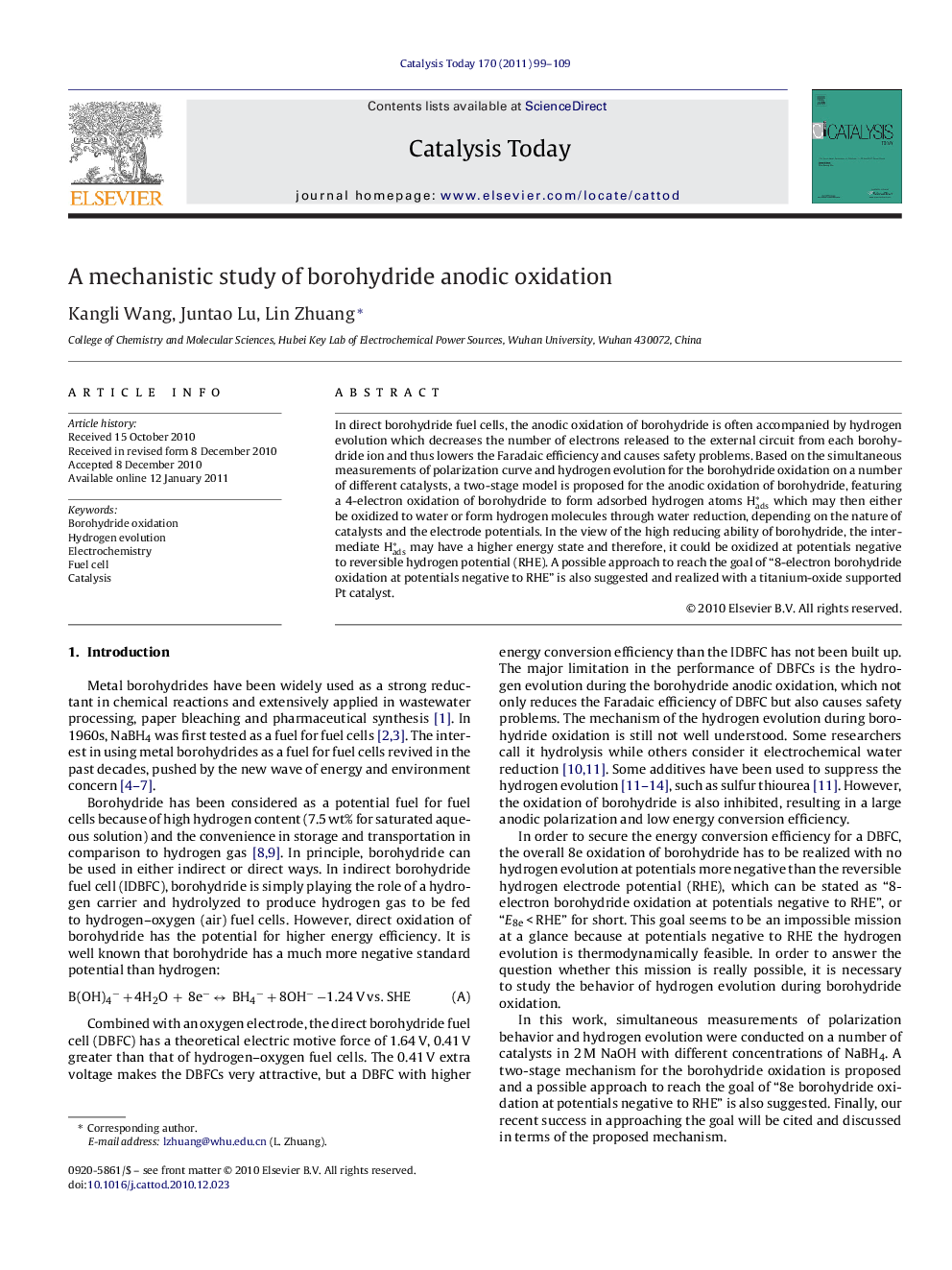| Article ID | Journal | Published Year | Pages | File Type |
|---|---|---|---|---|
| 56081 | Catalysis Today | 2011 | 11 Pages |
In direct borohydride fuel cells, the anodic oxidation of borohydride is often accompanied by hydrogen evolution which decreases the number of electrons released to the external circuit from each borohydride ion and thus lowers the Faradaic efficiency and causes safety problems. Based on the simultaneous measurements of polarization curve and hydrogen evolution for the borohydride oxidation on a number of different catalysts, a two-stage model is proposed for the anodic oxidation of borohydride, featuring a 4-electron oxidation of borohydride to form adsorbed hydrogen atoms Hads* which may then either be oxidized to water or form hydrogen molecules through water reduction, depending on the nature of catalysts and the electrode potentials. In the view of the high reducing ability of borohydride, the intermediate Hads* may have a higher energy state and therefore, it could be oxidized at potentials negative to reversible hydrogen potential (RHE). A possible approach to reach the goal of “8-electron borohydride oxidation at potentials negative to RHE” is also suggested and realized with a titanium-oxide supported Pt catalyst.
